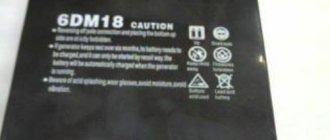PTF functionality
Any experienced car enthusiast, as well as an inexperienced one, is well aware of the role played by fog lights (FTL). In conditions of a white curtain, standard head lighting does not cope with its task of ensuring good visibility on the road, and all due to the fact that the fog is a suspension of water droplets, through which standard optics cannot penetrate. In addition, almost all of the light from such lanterns is reflected from the curtain. Thus, you get a whole white wall, which significantly complicates the view.
Anti-fog optics have their own emission spectrum that can penetrate such a wall. In addition, the luminous flux spreads horizontally and is directed downwards, which allows for good illumination of the road. Is it possible to install LEDs in fog lights? An interesting question that requires attention.
To make homemade LED fog lights we will need:
- 2 LEDs 10W each;
- 2 aluminum radiators from disassembly;
- 2 rubber gaskets from plastic pipes DN50 mm;
- 2 lenses from an old projector;
- junction box;
- 2 LM317T chips;
- 2 resistors;
- terminal block;
- can;
- silicone sealant.
I tested it and selected the current = 0.8 A for each LED. How this looks is shown in more detail in the video.
Author of the article “DIY LED fog lights” Wop127
The main mistake of many drivers
With regard to PTF, most drivers make a grave mistake - using optics for purposes other than their intended purpose. In addition, things can simply reach the point of madness: drivers equip their vehicles with such optics in large quantities. It is not uncommon to find sedans with such lights (4 pieces or more) on their roofs at any time.
Meanwhile, the traffic rules clearly state that turning on the PTF is allowed only during the dark period of the day and in conditions of insufficient visibility (fog, smoke). Some drivers turn them on instead of low beams, which is also a gross violation of traffic rules.
Therefore, we should not forget that PTF is just additional optics, although some owners manage to convert fog lights to LEDs. Of course, it is impossible to completely abandon them, since under some circumstances they are very helpful. Their main advantage from a design point of view is their special reflector and diffuser. There is nothing like this in any other optics yet.
Paradoxically, it is the fog lamps that consume the most energy, producing a powerful luminous flux that is significantly brighter than low beams. Modern traffic regulations do not contain any instructions regarding the color range of the PTF luminous flux. Because of this, various manufacturers are conducting their own experiments.
Hyundai Accent Milky Way › Logbook › Megaproject or LED PTF with your own hands from scratch (part 1).
Hi all!
So I decided to make myself a PTF in the Accenta (the function of which will include 3 modes: DRL, PTF and additional long-range) on LEDs, after several months of digesting different options in my head. I thought for a long time about what LEDs to use, what lenses, how to arrange the LEDs, how many pieces, what power to connect to, what radiators are needed. At the beginning there were options for 3-watt LEDs, 6 pieces per fog lamp, and along the perimeter there was a shelf of small LEDs for use as DRLs. Subsequently, he abandoned this idea. Having settled on XML, I searched for suitable lenses for a long time, until I came across lenses with a diameter of 38 mm and a half-brightness angle of 9 degrees, I immediately decided that I would use them (alled.ru/iris-fcx12104-cree-xml-9.html link for example, I didn’t buy it from this store). Having finally decided on the filling of the PTF, I ordered everything necessary: LED, lenses and a suitable radiator. Alas, I didn’t take a photo of everything purchased, there is only a photo of the SD, and the lenses and radiators will be visible in the next photos. When everything arrived, I began to make the body. It was necessary to make it from metal because the radiators will be attached to an impressive size, and therefore a lot of weight. And it’s easier for me to work with metal. The main problem was that the fog lights in the bumper are at an angle. It is not possible to measure this angle with a ruler on the car, the fog light plugs are cast as a single unit with the bumper, I tried to find at least some data on the angles on the Internet, there was nothing, until I remembered that I had an old broken bumper lying in my garage, left after an accident . Hold a hacksaw in hand and cut out a piece of the bumper with a plug for the fog light. We drank and easily took off all the sizes. Then I sat down at the computer and started creating a body in AutoCAD, this is a tedious task, so I won’t describe it. When I finished with AutoCAD I got this:
Then other parts of the body were cut out according to the template.
Next, I welded everything together, simultaneously trying on a radiator cut to the required size.
Then I started mounting the LEDs and lenses on the radiators. I screwed everything onto M3 bolts with an internal hexagon through the mounting holes in the lens body.
Well, then I installed everything into the case, for now, without sealing and other tricks, so to speak, to see what happened.
That's all for now, the next step is to cut out the protective glass and glue it to the body with sealant. And then make a system for attaching to the bumper and adjusting it. After installation it is already on the car with adjustment of the radiators, since one (the largest piece) behind the bumper is in the way of the bumper. Later I will explain why it is larger than the others. And also wait for the drivers to arrive from China.
Well, in the end I would like to ask for advice and help with information in connecting them to the car’s on-board network. The first thing you are interested in is: where can you connect in the Accent based on 60 watts of total power? The second question, it’s actually not that important, but what if someone can tell me, can anyone help (just with information) with making a driver for 3 operating modes: 300mA, 700mA and 2500mA output current and output voltage up to 12V?
Thank you all for your attention, look forward to the continuation!
Source
A little history
Returning to the topic of installing H11 LEDs in foglights, it’s worth rewinding a few decades ago and finding out where it all began. 1907 A laboratory in which one of the famous radio engineers, Guglielmo Marconi, spends his working time. It was he who noticed the glow effect of semiconductors, which was later called electroluminescence. Almost immediately, a note on this topic appeared in one of the scientific journals, but went unnoticed.
On the territory of the USSR, 20 years later, another scientist, Oleg Vladimirovich Losev, also discovered something similar. He conducted research on a silicon carbide crystal that glowed when current was passed through it. Subsequently, the effect received the name of a genius - Losev’s glow, and its author acquired a patent. However, the very nature of this glow was never discovered by the discoverer.
The answers came later
Long before drivers began installing H11 LEDs in the foglights of their cars, almost by the middle of the 20th century, the theory of pn junctions in relation to semiconductors was created. Based on this, in 1947 the first transistor was invented, which to this day has remained an unchanged element of radio engineering. The glow occurred when charged particles crossed a boundary consisting of two different semiconductor elements. And it is precisely the place where these two crystals come into contact that glows, which ultimately forms a kind of sandwich.
The whole difficulty lay in the production of semiconductors of the required structure. And this obstacle could not be overcome for a long time. Only since 1955 have research been successful. The first diode was produced by General Electric, although not everything is so simple here, since similar developments were also carried out in different countries of the world. But these are not yet the same H11 LEDs in the foglights of modern cars that are common today.
A revolutionary breakthrough was made by Nichia in 1995, demonstrating an ultra-bright LED, which was a full-fledged light source. From that time on, the development of semiconductor lighting devices began. And as many experts note, new light sources may completely replace traditional analogues in the near future.
Features of lamp selection
The first samples of LEDs were expensive - the price of one such copy in 1968 was $200! The cost decreased gradually, and for some time no one could even imagine that such light sources would become the main competitor to incandescent lamps. And there was no talk about cars at all. Now, many car enthusiasts are faced with a difficult choice of which LED fog lights to buy for their car.
On the market you can find a wide range of automotive optics using diodes that differ in a number of parameters:
- form;
- dimensions;
- material of manufacture;
- shade of light flux.
There are also many manufacturers, but preference should be given only to trusted companies. As for the shape, on the modern market PTFs are presented in the form of a circle, rectangle, oval, square.
There is no useful function here other than aesthetics. Therefore, the choice depends only on the requirements and tastes of car enthusiasts.
conclusions
What do we get in the end? It is precisely that LED PTFs do not provide any big advantages over standard halogen ones. Currently I'm driving with my neighbor on. In winter, when there is a lack of current, I simply turn off the headlights (at a traffic light, for example), if I see that there is not enough current to charge the battery. At the same time, I’m not afraid of breaking my fog lights in the next hole. Again, fashionable LED lighting devices attract unnecessary attention, and when undergoing maintenance, it is advisable to remove them, since a meticulous master may ask for a certificate. Again, the factory DRLs in the headlights look much more aesthetically pleasing. If you compare homemade ones with good factory copies, then there is no economic feasibility to assemble yourself, and ready-made LED PTFs for 3-4 thousand rubles apiece are worth the money. Another thing is that they ordered from China can be 2-3 times cheaper than if bought in Russian online stores. Thus, I closed this issue for myself, and I don’t plan to make any more additional lighting devices on diodes (PTF, DRL). The only thing is that I’ll probably assemble a 100 Watt chandelier.
Recently, manufacturers have been using a different type of light source for automotive optics: LED headlights. They consume less electricity and are more technologically advanced to manufacture than traditional ones, and provide designers with rich opportunities when designing the appearance of a car.
Another important point
As mentioned above, the luminous flux can be of different shades:
- white;
- blue;
- red;
- yellow.
Here you should think not only about personal preferences, but also about other road users. For example, H3 LEDs in blue and white fog lights will blind oncoming drivers, which is not good for anyone, since not only personal safety depends on it. Therefore, it is better to purchase optics with a yellow tint.
Undeniable popularity
Despite the variety of PTFs, which are represented by LED, halogen, xenon products, the first one is at the peak of popularity. And all due to some undeniable advantages. And the main advantage is that LEDs emit much more light per watt when compared to standard incandescent bulbs. In addition, there is virtually no heating.
This allows you to consume less energy, and accordingly, the service life is significantly increased. There is an opinion that when using fog lights with LEDs you can save on fuel, even if not as significantly as you would like. In addition, the maximum luminous flux is generated very quickly, since there is no need for ignition, which some lamps lack. And if we compare it with a xenon analogue, then LEDs cannot blind drivers of oncoming cars.
Reflector calculation
The main result of a light device is a beam of light; accordingly, it is necessary to begin the development of PTF by determining the shape of the light beam that needs to be obtained. Since the task is to make a PTF, we turn to UNECE Rules No. 48, paragraph 6.3 “Front fog lamp”, subparagraph 6.3.5 “Geometric visibility” - the boundaries of the beam in the vertical plane are 5 degrees up and down, in the horizontal plane 45 degrees outwards and 10 degrees inward. It turns out that the standard fog light should produce a “sausage” with an aspect ratio of 10 to 55.
Having decided on the required shape of the light beam, you should decide on the light source. Modern Chinese industry offers a huge selection of LEDs, of different shapes, designed for different currents. The final luminous flux is measured in lumens, the efficiency of the LED is indicated in luminous efficiency Lumen/Watt, the average for cheap ultra-bright LEDs is about 200 lumens per Watt. In my opinion, the optimal ones are 3 W LEDs, which have a good light output with a small light-emitting surface. Why you shouldn’t use LEDs of higher power - because of the large area of the light-emitting crystal, which makes it much more difficult to obtain a light beam of the required shape. I ordered 50 3 W LEDs from China. When supplied at about 3.5 Volts, they consume a current of approximately 700 milliamps and glow as brightly as possible. At this current, the LEDs get quite hot. The current cannot be exceeded, and even a short surge in current is enough to burn out the LED, that is, a voltage stabilizer (ideally a current) is required. As the LED heats up, the current consumption increases, which leads to even greater heat generation and failure of the LED. In general, the service life of LEDs is often indicated in hours of 10 thousand, 50 thousand. The meaning of this figure is similar to the half-life of radioactive elements, that is, if it is said that the service life of an LED is 1000 hours, this means that after a thousand hours the LED will produce half as many lumens .
Since the brightness of one LED is significantly lower than a halogen lamp, and even more so a xenon lamp, to obtain a light beam of the required brightness, parallel connection of several blocks (diode + reflector) is used. number of mini-blocks.
A more preferable device for forming a light beam in comparison with a reflector is a lens, but I have not found any ready-made ones with a beam of the required shape (10 by 55 degrees), and it is quite difficult to make a lens yourself. However, I plan to soon buy lenses with a scattering angle of 5 degrees and assemble a 100 Watt chandelier, but that’s a completely different story











